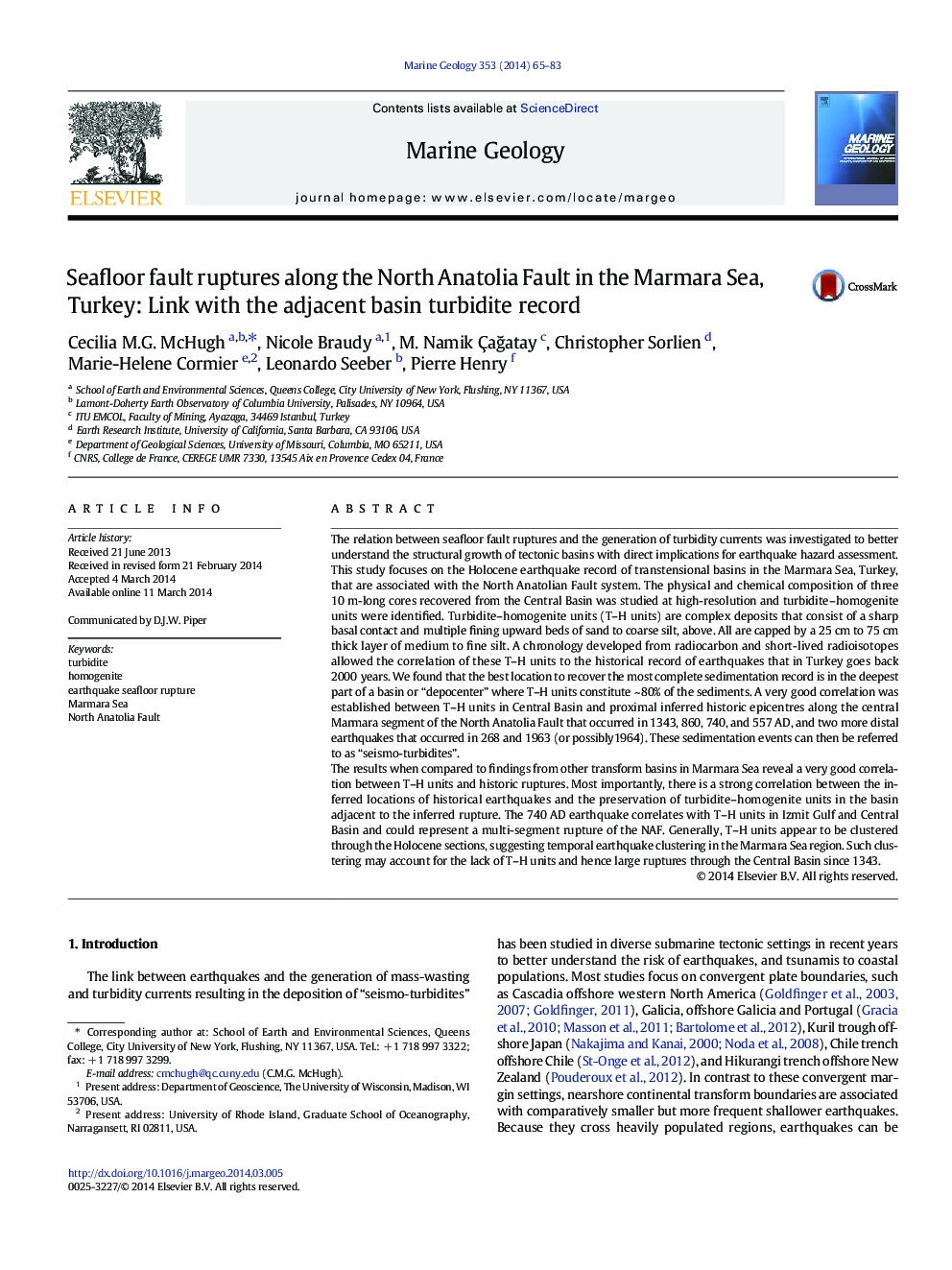| کد مقاله | کد نشریه | سال انتشار | مقاله انگلیسی | نسخه تمام متن |
|---|---|---|---|---|
| 4718295 | 1639099 | 2014 | 19 صفحه PDF | دانلود رایگان |
• Turbidite-homogenite units were correlated to inferred historic earthquake ruptures and referred to as seismo-turbidites.
• There is a strong correlation between seafloor ruptures and seismo-turbidites of the adjacent basin.
• The 740 AD earthquake could represent a multi-segment rupture.
• There is an apparent gap in ruptures in Central Basin since 1343.
• Initial findings suggest earthquake clustering for the NAF in Marmara Sea.
The relation between seafloor fault ruptures and the generation of turbidity currents was investigated to better understand the structural growth of tectonic basins with direct implications for earthquake hazard assessment. This study focuses on the Holocene earthquake record of transtensional basins in the Marmara Sea, Turkey, that are associated with the North Anatolian Fault system. The physical and chemical composition of three 10 m-long cores recovered from the Central Basin was studied at high-resolution and turbidite–homogenite units were identified. Turbidite–homogenite units (T–H units) are complex deposits that consist of a sharp basal contact and multiple fining upward beds of sand to coarse silt, above. All are capped by a 25 cm to 75 cm thick layer of medium to fine silt. A chronology developed from radiocarbon and short-lived radioisotopes allowed the correlation of these T–H units to the historical record of earthquakes that in Turkey goes back 2000 years. We found that the best location to recover the most complete sedimentation record is in the deepest part of a basin or “depocenter” where T–H units constitute ~ 80% of the sediments. A very good correlation was established between T–H units in Central Basin and proximal inferred historic epicentres along the central Marmara segment of the North Anatolia Fault that occurred in 1343, 860, 740, and 557 AD, and two more distal earthquakes that occurred in 268 and 1963 (or possibly1964). These sedimentation events can then be referred to as “seismo-turbidites”.The results when compared to findings from other transform basins in Marmara Sea reveal a very good correlation between T–H units and historic ruptures. Most importantly, there is a strong correlation between the inferred locations of historical earthquakes and the preservation of turbidite–homogenite units in the basin adjacent to the inferred rupture. The 740 AD earthquake correlates with T–H units in Izmit Gulf and Central Basin and could represent a multi-segment rupture of the NAF. Generally, T–H units appear to be clustered through the Holocene sections, suggesting temporal earthquake clustering in the Marmara Sea region. Such clustering may account for the lack of T–H units and hence large ruptures through the Central Basin since 1343.
Journal: Marine Geology - Volume 353, 1 July 2014, Pages 65–83
